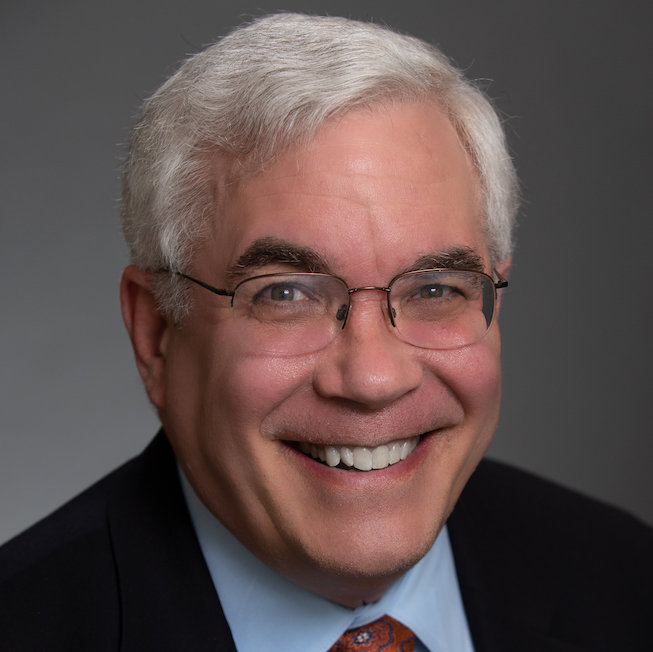5 minutes
Three key building blocks
I’ve been a serial learner most of my life. In fact, I drive my wife and colleagues crazy lugging multiple iPads, books, articles and videos around with me wherever I go. I have a book recommendation for nearly everyone who crosses my path. I’m such a space nut that I attended adult space camp (“adult” perhaps being a relative term) at the tender age of 35—to train on the actual simulators that NASA astronauts used in years gone by—because I was curious to learn what it was like to fly the Space Shuttle. Call me a learning geek.
So I guess it won’t surprise you that I’ve been thinking a lot lately about the idea of building a culture of learning among credit union boards and about how such a culture might just be the salve to a number of credit union challenges.
As it happens, 25 years ago, Peter Senge, an American systems scientist and a senior lecturer at the MIT Sloan School of Management (host of the first segment of CUES’ Strategic Innovation Institute), suggested the benefits of becoming a “learning organization”—one that has developed a culture that actively encourages leaders, managers and employees to “continuously acquire, transfer and create new knowledge.”
Senge’s thesis was applauded when it emerged, but for many large corporations and institutions to actually become continuous learning organizations was an overwhelming and daunting challenge. The personal computer and Internet were still in their infancy. (To give it some historical context, it was the same year “www” was proposed for universal use on the Web, and the Apple computers at the time were the Macintosh Classic and the Lisa. We would have to wait another 11 years for the first generation iPod!)
I’d like to suggest that Senge was right in his appraisal of what needed to happen, but seriously ahead of his time. The digital and conceptual environment of today had to be born to enable his vision of a learning organization to genuinely flourish.
But the time has been here for a while and it’s time for credit unions to get aboard this train.
Today’s credit union faces a particularly challenging, rapidly changing and unpredictable landscape. The cycle times for new products and services have become extremely compressed. Entrepreneurial disrupters can go from an idea to having a major impact on the financial or technological landscape in just months or years. (For example, Square became a $2 billion corporation in just two years.) With ever-increasing regulatory complexities, consolidation, evolving board governance practices, exploding technologies, and the quickly changing needs and expectations of your members and community, the demands on credit union leaders have become greater than ever.
This is your moment ... you can allow the challenges to overcome you, or you can overcome the challenges. It is vital that your board and senior management identify key trends, changes and developments quickly—appreciate the implications of such shifts quickly—and courageously help your credit union to adapt quickly. Why the rush? Simply put, the world won’t wait for you. It will change at its own pace … credit unions will have to work very hard to just keep up, let alone “get to the future first!”
How can your leadership ensure that it: (1) is genuinely aware of the critical changes taking place; (2) deeply appreciates the implications of those changes; (3) is able to meaningfully partner with management to craft strategies that respond to key shifts and needs; and (4) can do so in an economic climate that demands speed and effective execution of vital strategic choices?
Indeed, one of the most important strategic challenges facing nearly all credit unions today is how to individually and collectively learn the changes that are taking place around them, ask the hard questions that need to be asked, strategically experiment, capture the learning from those experiments, and innovate rapidly enough to ensure the relevance of credit unions for years to come.
I am convinced that a genuine commitment to be a modern-day “learning organization” led by a “learning board” will help your credit union better understand, successfully innovate and rapidly adapt to the swiftly changing world that surrounds it.
But, what do I mean when I say you should build a learning organization and board? And, where do you begin? There are three key building blocks for any credit union leader seeking to foster a learning culture:
- A supportive learning environment. First, you will need to make a conscious—credit union-wide—that you are dedicated to building a learning organization. It takes a commitment of time, energy and resources. And not just from your board members. Your credit union’s senior management team will be required to contribute and, often, play an active role in helping board members access key learning resources.
- A concrete learning process. A number of helpful resources are available to support your efforts. Certainly your CUES Director or Center for Credit Union Board Excellence membership opens up a number of important doors to ongoing learning, training and conferences. Be specific about your credit union’s expectations concerning active learning. Outline initial and ongoing requirements for board members, and don’t forget to include senior management and your employees in the fold. Include an assessment of your own and your employees’ commitment to learning as a part of your annual evaluation processes.
- Leadership that reinforces learning. Lastly, and most importantly, your commitment to learning must come from the top-down – demonstrated overtly by both the board and the senior management team. At my own organization, my staff knows how important ongoing learning is to me. While space camp may have been a dream for me, I do ensure that we regularly include key questions, strategic ideas and even provocative book discussions on the agendas for every one of our quarterly team meetings…
Michael Daigneault, CCD, serves as chief executive officer of CUES strategic provider Quantum Governance, L3C, and has more than 30 years of experience in the fields of governance, management, strategy, planning and facilitation. Daigneault has served as an executive in residence at CUES Governance Leadership Institute at the University of Toronto’s Rotman School of Management.






